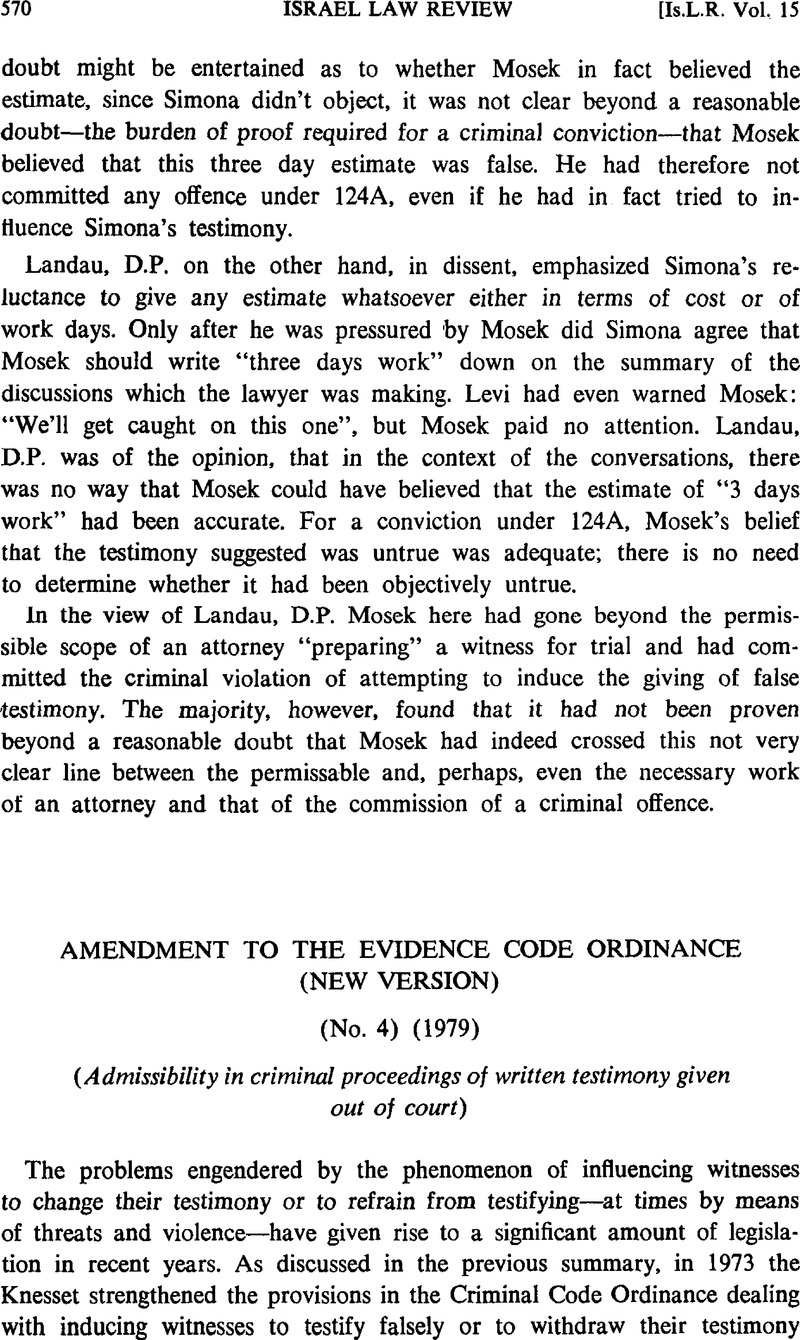No CrossRef data available.
Article contents
Amendment to the Evidence Code Ordinance (New Version)
Published online by Cambridge University Press: 12 February 2016
Abstract

- Type
- Notes
- Information
- Copyright
- Copyright © Cambridge University Press and The Faculty of Law, The Hebrew University of Jerusalem 1980
References
page 571 note 1 28 L.S.I. 85. The legislation itself also provided that the accused should not be released on bail until this testimony is taken (for a period of up to two weeks) without the consent of the prosecutor, thereby enabling the taking of the testimony at the early stage without the fear that the accused would intimidate the witnesses. For a full analysis of the act, see Harnon, E., Law of Evidence, (Jerusalem, 1977, in Hebrew)Google Scholar Part Two, sec. 25.4.
page 571 note 2 For an analysis of prior and less comprehensive bills that attempted to deal with this problem, see E. Harnon, supra n. 1, sec. 25.5.
page 572 note 3 Ibid.
page 572 note 4 Law of Evidence Revision (Protection of Children) Law, 1955, 9 L.S.I. 102. See also Mimron v. State of Israel (1972) (I) 25 P.D. 281. See generally, Harnon, supra, n. 1, sec. 25.3.
page 572 note 5 3 Evidence, sec. 1012 (Chadbourn rev. 1970). In the first edition of his treatise, Dean Wigmore adhered to the traditional position. He changed his view, however, in the second and subsequent editions of his treatise. For commentators who have urged views similar to Wigmore's see McCormick, , Evidence (2nd ed.) sec. 251Google Scholar; Maguire, , “The Hearsay System: Around and Through the Thicket” (1961) 14 Vand. L.R. 741, 747Google Scholar; Morgan, , “Hearsay Dangers and the Application of the Hearsay Concept” (1948) 62 Harv. L.R. 177, 192–196.CrossRefGoogle Scholar
page 572 note 6 See generally California v. Green, 379 U.S. 152, 90 S. Ct. 1930 (1970).
page 573 note 7 Calif. Evidence Code sec. 1235, 770.
page 573 note 8 California v. Green, supra n. 5.
page 573 note 9 Rule 503 (b) (1942).
page 573 note 10 Rule 63(1) (1953). A later draft of the Uniform Rules of Evidence incorporated the limitation on this rule as finally adopted in the Federal Rules of Evidence. See infra.
page 573 note 11 For a thorough discussion of the circumstances surrounding the adoption of the Federal Rule, as well as an analysis of the rule see Weinstein, J. B., Evidence (1979) vol. 4Google Scholar, sec. 801 (d) (1) [01].
page 574 note 12 See (1978) 29 H.H. 1352, p. 257.
page 574 note 13 See e.g., Rule 804 of the Federal Rules of Evidence.
page 574 note 14 H.H., supra n. 12, p. 260.
page 575 note 1 2 L.S.I. [N.V.] 198.


